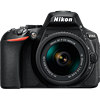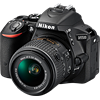Main
Model
Price
Advantages
launch
Announced
Body type
Camera subcategory
Sensor
Effective pixels
Max resolution
Sensor size
Sensor type
Processor
Image ratio w:h
Other resolutions
Sensor photo detectors
Image
ISO
White balance presets
Custom white balance
Image stabilization
Uncompressed format
JPEG quality levels
Photography features
Minimum shutter speed
Maximum shutter speed
Aperture priority
Shutter priority
Manual exposure mode
Subject / scene modes
Built-in flash
Flash range
External flash
Flash modes
Continuous drive
Self-timer
Metering modes
Exposure compensation
WB Bracketing
AE Bracketing
Screen / viewfinder
Articulated LCD
Screen size
Screen dots
Touch screen
Screen type
Live view
Viewfinder type
Viewfinder coverage
Viewfinder magnification
Videography features
File Format
Microphone
Speaker
Resolutions
Optics & Focus
Autofocus
Manual focus
Number of focus points
Lens mount
Focal length multiplier
Digital zoom
Physical
Weight (inc. batteries)
Dimensions
Environmentally sealed
Battery
Battery details
Battery Life (CIPA)
Storage
Storage types
Connectivity
USB
HDMI
Microphone port
Headphone port
Wireless
Wireless notes
Remote control
Other features
Orientation sensor
Timelapse recording
GPS
GPS notes
Samples
Videos
Summary
The D5500 weighs 420g which is 45g less than the weight of the Nikon D5600. The Nikon D5600 can utilize optional accessory GPS devices. This feature can be convenient if you like to travel, to be able to check the photo metadata and find out exactly where a photo was shot.
The Nikon D5600 and the D5500 have an equal number of advantages but as the D5500 has that is a very significant specification then it becomes the best buy.


